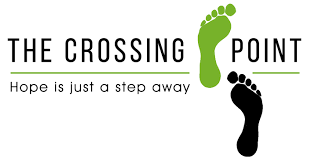Everyone who is living in an abusive relationship experiences this in different ways. However, there are often patterns to abusive behaviours. This includes controlling, bullying and / or violent behaviour. The behaviour can be from your partner, ex-partner or close family member. If you are worried that you or a friend may be experiencing abuse then you could try working your way through our checklist below.
- Does your partner or someone close to you criticise you, put you down or call you names?
- Are you frightened about how your partner will react if you get into an argument?
- Are you frightened of your partner when he or she has been drinking?
- Has your partner ever hit you?
- Does your partner complain about your friendships or family members or stop you from seeing them?
- Does your partner ask you to do things you are uncomfortable with?
- Are you ever worried that your children are seeing or hearing things they shouldn’t be?
- Has your partner ever forced you to have sex with him/her or with other people? Has he/she made you participate in sexual activities that you were uncomfortable with?
- Has your partner ever kept you short of money so you are unable to buy food and other necessary items for yourself and your children?
- Has you partner prevented you from continuing or starting a college course, or from going to work?
- Does your partner constantly check up on you or follow you?
- Has your partner ever tried to control you by telling you you could be deported because of your immigration status?
- Has you partner ever threatened to take your children away or said he/she would refuse to let you take them with you, or even to see them, if you left him/her?
Having your own safety plan can help you protect yourself and your children. It helps you plan what you might do in the case of future violence or abuse. It can also help you to think about how you can increase your safety either within the relationship, or if you decide to leave.
In an emergency, always call the police on 999.
You are not responsible for your partner’s violence and abuse – only they are and only they can stop it. But there are things you can think about and do to increase your own and your children’s safety. For example, there may be a pattern to the violence which may enable you to plan ahead to increase your safety.
Here are some of the things you can consider that might increase your safety:
- Plan in advance how you might respond in different situations, including crisis situations.
- Think about the different options that may be available to you.
- Keep with you any important and emergency telephone numbers (e.g. your local IDAS number, the 24 hour helpline number; the police domestic violence unit; your GP; your social worker, if you have one; your children’s school; your solicitor and so on)
- Teach your children to call 999 in an emergency, and what they would need to say (for example, their full name, address and telephone number).
- Think about where you might go in an emergency. Are there neighbours you could trust? If so, tell them what is going on, and ask them to call the police if they hear sounds of a violent attack.
- Rehearse an escape plan, so in an emergency you and the children can get away safely. Think about the safest routes in and out of your house.
- Pack an emergency bag for yourself and your children, and hide it somewhere safe (for example, at a neighbour’s or friend’s house). Try to avoid mutual friends or family.
- Try to keep a small amount of money on you at all times – including change for the phone and for bus fares.
- Know where the nearest phone is, and if you have a mobile phone, try to keep it with you.
- If you suspect that your partner is about to attack you, try to go to a lower risk area of the house – for example where there is a way out and access to a telephone. Avoid the kitchen or garage where there are likely to be knives or other weapons; and avoid rooms where you might be trapped, such as the bathroom, or where you might be shut into a cupboard or other small space.
- Be prepared to leave the house in an emergency.
Preparing to leave
Whatever coping strategies you have used – there may come a time when you feel the only option is to leave your partner.
Thinking about leaving and making the decision to leave can be a long process. Planning it doesn’t mean you have to carry it through immediately – or at all. But it may help to be able to consider all the options and think about how you could overcome the difficulties involved. If you do decide to leave your partner, it is best if you can plan this carefully. Sometimes abusers will increase their violence if they suspect you are thinking of leaving, and will continue to do so after you have left, so this can be a particularly dangerous time for you. It’s important to remember that ending the relationship will not necessarily end the abuse.
Here are some things to consider:
- Plan to leave at a time you know your partner will not be around.
- Take your children with you, otherwise it may be difficult or impossible to have them living with you in future. If they are at school, make sure that the head and all your children’s teachers know what the situation is, and who will be collecting the children in future.
- Try to take everything you will need with you, including any important documents relating to yourself and your children, as you may not be able to return later.
- If at all possible, try to set aside a small amount of money each week, or even open a separate bank account.
What to pack if you are planning to leave your partner
Ideally, you need to take all the following items with you if you leave. Some of these items you can try to keep with you at all times; others you may be able to pack in your ’emergency bag’.
- Some form of identification.
- Birth certificates for you and your children.
- Passports (including passports for all your children), visas and work permits.
- Money, bankbooks, cheque book and credit and debit cards.
- Keys for house, car, and place of work. (You could get an extra set of keys cut, and put them in your emergency bag.)
- Cards for payment of Child Benefit and any other welfare benefits you are entitled to.
- Driving licence (if you have one) and car registration documents, if applicable.
- Prescribed medication.
- Copies of documents relating to your housing tenure (for example, mortgage details or lease and rental agreements).
- Insurance documents, including national insurance number.
- Address book.
- Family photographs, your diary, jewellery, small items of sentimental value.
- Clothing and toiletries for you and your children.
- Your children’s favourite small toys.
You should also take any documentation relating to the abuse – e.g. police reports, court orders such as injunctions and restraining orders, and copies of medical records if you have them.
Protecting yourself after you have left
There are many ways different things that can increase your safety once you have left, for example, ensuring that your home security is as effective as it can be, getting an injunction (link to legal help), changing your name, altering your routines, changing your mobile phone, swapping your bank accounts, closing your Facebook account, ensuring that there are no tracking devices on your phone or tablet and so on. Getting the right safety measures in place depend upon your individual circumstances. IDAS workers are experienced in helping people maximise their safety and are happy to work with you to develop your own individual safety plan.
Protecting yourself if you stay in your home
If you stay or return to your home after your partner has left, then you might need some form of legal protection. There are other things that can be done to help you feel safer, for instance:
- Changing the locks on all doors.
- Putting locks on all windows if you don’t have them already.
- Installing smoke detectors on each floor, and providing fire extinguishers.
- Installing an outside light (back and front) which comes on automatically when someone approaches.
- Informing the neighbours that your partner no longer lives there, and asking them to tell you – or call the police – if they see him nearby.
- Changing your telephone number and making it ex-directory.
- Using an answering machine to screen calls.
- Keeping copies of all court orders together with dates and times of previous incidents and call-outs for reference if you need to call the police again.
An IDAS worker can advise you on safety measures whatever your individual situation.
If your ex-partner continues to harass, threaten or abuse you, you can get help through the criminal or civil legal processes and you can receive support from IDAS or other support agencies in your area.
Text content

Text content


Text content.j ij
li uh iiuhu
kug lig
jyg uf
Text contentunugbig
ku yg
g y





